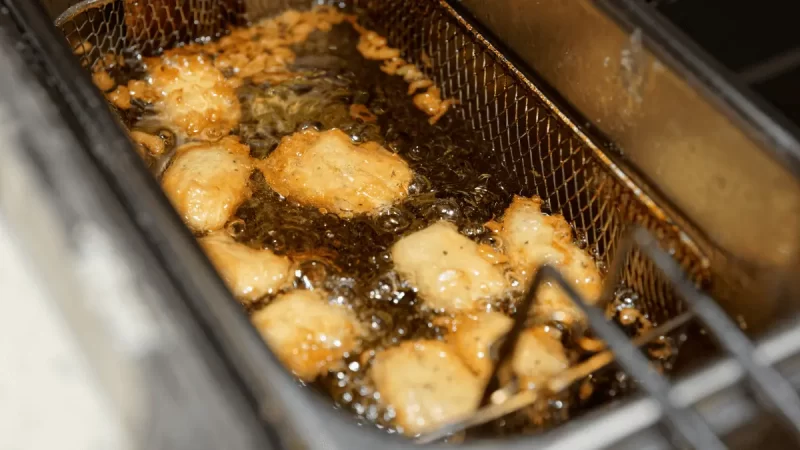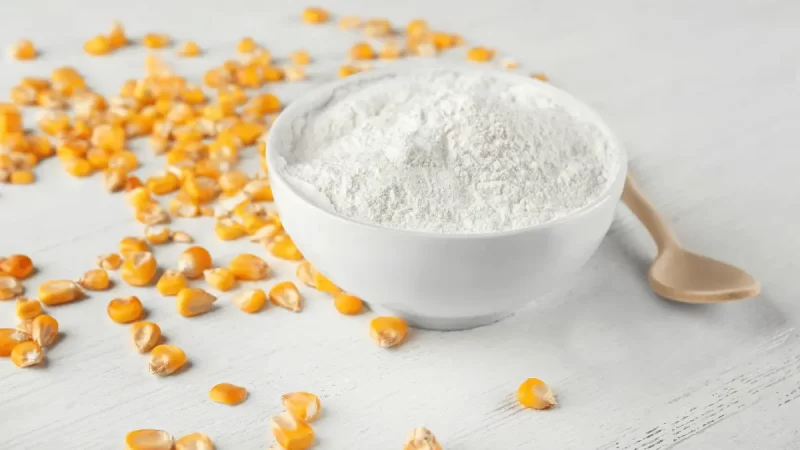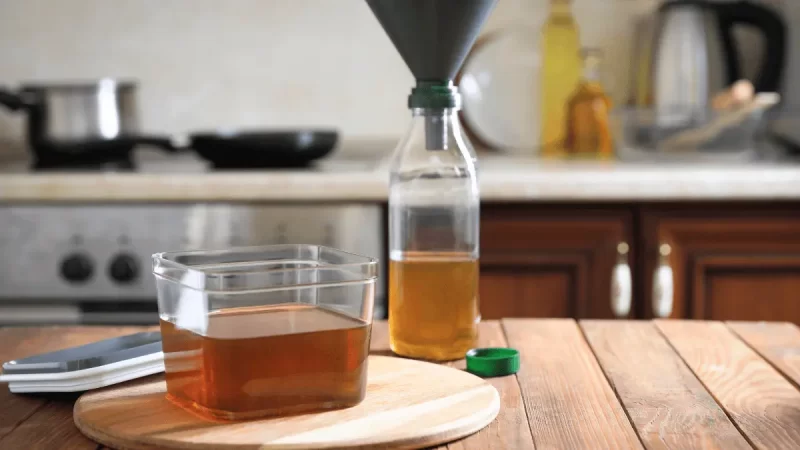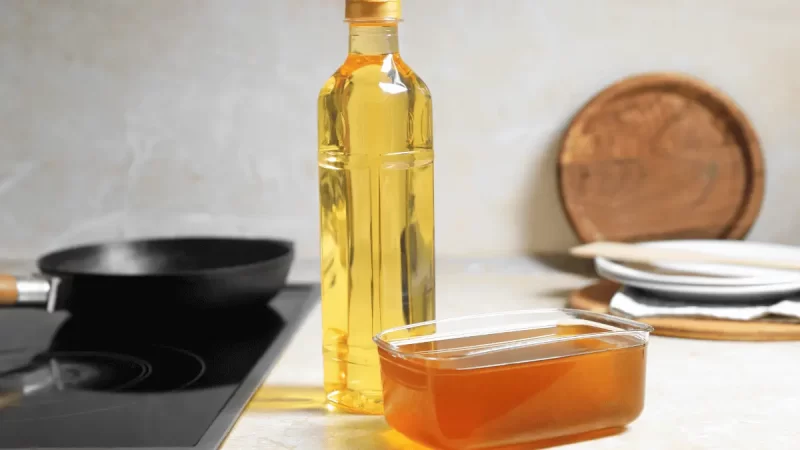Are you tired of disposing of your used cooking oil and contributing to environmental pollution? Well, worry no more! In this article, we will reveal a secret kitchen hack that will help you clean your used cooking oil with the help of cornstarch. Not only will this method save you money, but it will also reduce waste and promote a greener lifestyle. Get ready to learn the step-by-step process of transforming your dirty oil into a usable and pristine state.

How to Clean Cooking Oil with Cornstarch: A Greener Solution
The Importance of Properly Cleaning Used Cooking Oil
Proper disposal of used cooking oil is crucial to avoid clogged drains, sewage problems, and environmental damage. By reusing the oil with the help of cornstarch, you not only save money but also contribute to sustainability efforts.

Understanding the Science Behind Cornstarch
Cornstarch, a common kitchen ingredient, possesses amazing absorbent properties. When mixed with cooking oil, it acts as a natural cleaner, effectively separating impurities from the oil. This natural and affordable method offers a sustainable solution to extend the lifespan of your cooking oil.
Step-by-Step Guide on Cleaning Cooking Oil with Cornstarch
Step 1: Gather the Materials
To clean your used cooking oil, you’ll need the following materials:
- Used cooking oil
- Cornstarch
- Fine mesh strainer
- Funnel
- Glass container
Step 2: Cool the Used Cooking Oil
Allow the used cooking oil to cool completely before attempting to clean it. Hot oil can cause accidents and may not mix effectively with cornstarch.
Step 3: Add Cornstarch to the Oil
Once the oil has cooled, transfer it to a glass container. Gradually add cornstarch while stirring continuously. Aim to achieve a smooth, paste-like consistency.
Step 4: Strain the Mixture
Place a fine mesh strainer over another clean container or bowl. Pour the oil and cornstarch mixture through the strainer, allowing the clean oil to separate from any remaining impurities.
Step 5: Repeat the Process
If the oil still appears cloudy or contains visible debris, repeat steps 3 and 4 until the oil appears clean and free of impurities.

Proper Storage and Reuse of Cleaned Cooking Oil
Once you have successfully cleaned your cooking oil, it’s important to store it correctly to maintain its quality. Here are a few tips:
- Use a clean, airtight glass container for storage.
- Keep the container in a cool and dark place, away from direct sunlight.
- Avoid mixing different types of oils to prevent cross-contamination.
- Monitor the oil’s odor and appearance; if it starts to smell rancid or shows signs of spoilage, it’s time to dispose of it.
Cleaning used cooking oil with cornstarch is an eco-friendly solution that allows you to extend the life of your oil while reducing waste. By following this simple method, you can enjoy clean and reusable oil for your future culinary adventures. Embrace this sustainable practice and join the movement towards a greener and more responsible way of cooking. So, why wait? Grab your cornstarch and transform your used cooking oil into a valuable resource today!

FAQs about Cleaning Cooking Oil with Cornstarch
Yes, it is safe to clean cooking oil with cornstarch. Cornstarch is a natural ingredient commonly used in cooking and has absorbent properties that help separate impurities from the oil.
Yes, once you have successfully cleaned the cooking oil using cornstarch, you can reuse it. However, ensure that you store it properly in a clean, airtight glass container and monitor its odor and appearance to ensure it doesn’t spoil.
You can repeat the cleaning process as many times as needed until the oil appears clean and free of impurities. It may require multiple iterations, especially if the oil was heavily contaminated.
Yes, you can use any type of cooking oil for this method. Whether it’s vegetable oil, canola oil, or olive oil, the cornstarch cleaning process works effectively on all types of cooking oils.
There isn’t a specific ratio, as it depends on the amount of oil you are cleaning. The goal is to achieve a smooth, paste-like consistency when mixing the oil and cornstarch. Start by adding cornstarch gradually and adjust as needed.
While a fine mesh strainer is recommended for optimal results, you can use a regular strainer or cheesecloth as an alternative. However, keep in mind that using a finer mesh will ensure better separation of impurities from the oil.
Yes, you can use cornstarch to clean deep-frying oil. The method remains the same, regardless of the type of cooking oil or the cooking process involved.
After straining, the leftover cornstarch and impurities can be discarded. Avoid pouring them down the sink, as it may cause clogs. Dispose of them in the trash or as per your local waste disposal guidelines.
While this method can help remove some impurities from old and darkened cooking oil, it may not restore the oil to its original quality. It’s best to clean the oil as soon as possible after use for optimal results.
Yes, there are alternative methods to clean cooking oil, such as using a coffee filter or using a centrifuge. However, the cornstarch method described in this article is simple, effective, and widely accessible.
Remember, always exercise caution when working with hot oil, and dispose of used cooking oil responsibly according to your local regulations.





